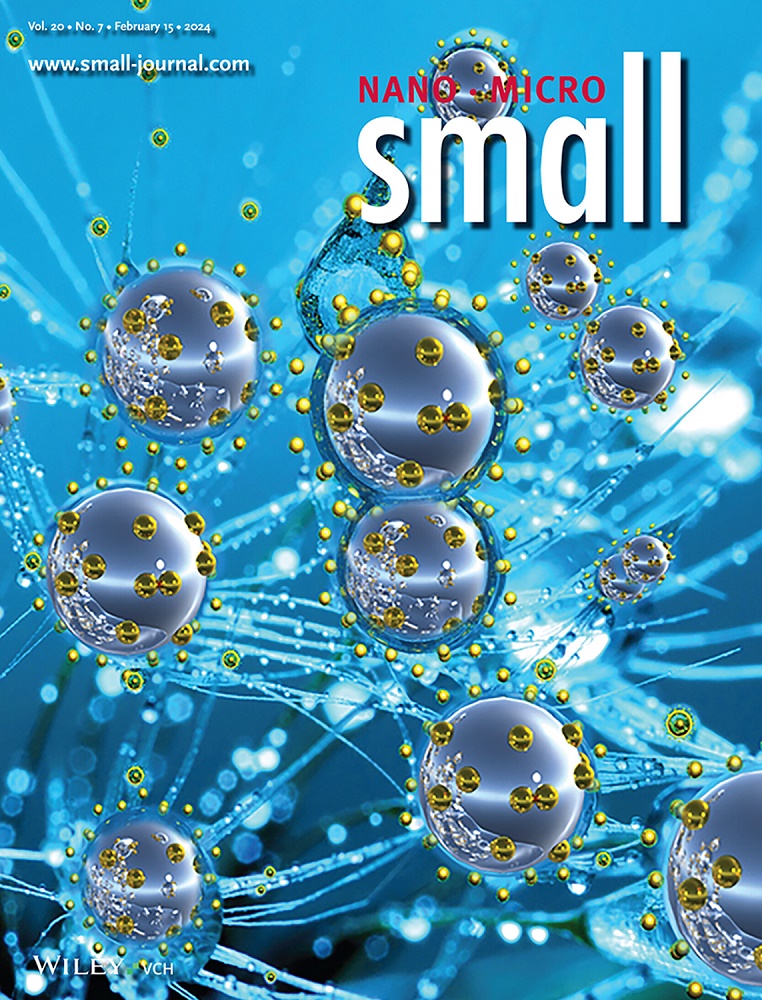Microstructure and Microenvironment Regulation of Covalent Organic Frameworks for Electrochemical CO2 Reduction Reaction.
IF 12.1
2区 材料科学
Q1 CHEMISTRY, MULTIDISCIPLINARY
引用次数: 0
Abstract
The growing energy crisis and environmental concerns have drawn significant attention to the electrochemical CO2 reduction reaction (eCO2RR), which can directly convert CO2 into high-value-added chemicals. Covalent organic frameworks (COFs) featured with their distinctive pore structures and chemical tunability have demonstrated promise for CO2 conversion. The current research mainly focuses on the macroscopic regulation of COFs, exploring their applications in eCO2RR through synthesis methods, conductivity optimization, structural modification, etc. However, the critical role of the microstructure and microenvironment in modulating catalytic performance remains unexplored. This review comprehensively summarizes the recent advances in optimizing the eCO2RR performance of COF-based materials via the microstructure and microenvironment engineering at the active sites, including precise control of charge distribution and adsorbed species concentration. Various strategies such as ligand engineering, linkage engineering, and substituent effect have been introduced to tune the local electron density and improve their charge distribution, thereby enhancing the catalytic activity. Furthermore, how selective adsorption of specific anions and cations on the active site alters the adsorption energy of key intermediates is highlighted, steering the reaction pathway. Finally, the current challenges in COFs for eCO2RR are outlined and potential solutions providing valuable insights for the rational design of next-generation COF electrocatalysts are proposed.电化学CO2还原反应中共价有机骨架的微观结构及微环境调控
日益严重的能源危机和环境问题引起了人们对二氧化碳电化学还原反应(eCO2RR)的重视,该反应可以直接将二氧化碳转化为高附加值的化学品。共价有机框架(COFs)具有独特的孔结构和化学可调性,在二氧化碳转化中具有广阔的应用前景。目前的研究主要集中在COFs的宏观调控上,通过合成方法、电导率优化、结构修饰等探索COFs在eCO2RR中的应用。然而,微观结构和微环境在调节催化性能中的关键作用仍未被探索。本文综述了近年来通过微观结构和活性位点微环境工程优化cof基材料eCO2RR性能的研究进展,包括精确控制电荷分布和吸附物质浓度。通过配体工程、连锁工程、取代基效应等多种策略调整了局部电子密度,改善了它们的电荷分布,从而提高了催化活性。此外,特定阴离子和阳离子在活性位点上的选择性吸附如何改变关键中间体的吸附能,从而指导反应途径。最后,概述了目前COFs用于eCO2RR的挑战,并提出了潜在的解决方案,为下一代COF电催化剂的合理设计提供了有价值的见解。
本文章由计算机程序翻译,如有差异,请以英文原文为准。
求助全文
约1分钟内获得全文
求助全文
来源期刊

Small
工程技术-材料科学:综合
CiteScore
17.70
自引率
3.80%
发文量
1830
审稿时长
2.1 months
期刊介绍:
Small serves as an exceptional platform for both experimental and theoretical studies in fundamental and applied interdisciplinary research at the nano- and microscale. The journal offers a compelling mix of peer-reviewed Research Articles, Reviews, Perspectives, and Comments.
With a remarkable 2022 Journal Impact Factor of 13.3 (Journal Citation Reports from Clarivate Analytics, 2023), Small remains among the top multidisciplinary journals, covering a wide range of topics at the interface of materials science, chemistry, physics, engineering, medicine, and biology.
Small's readership includes biochemists, biologists, biomedical scientists, chemists, engineers, information technologists, materials scientists, physicists, and theoreticians alike.
 求助内容:
求助内容: 应助结果提醒方式:
应助结果提醒方式:


